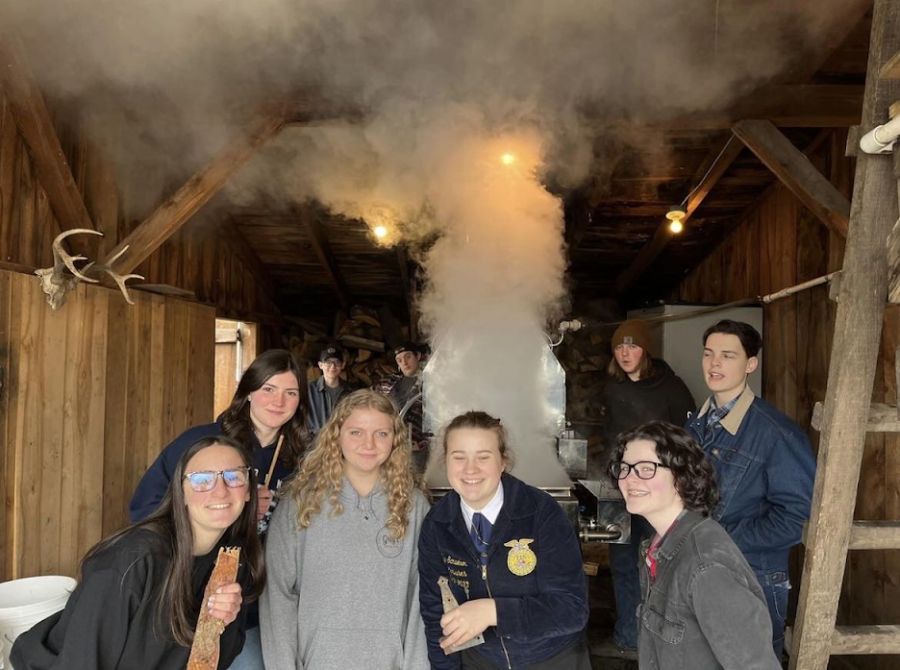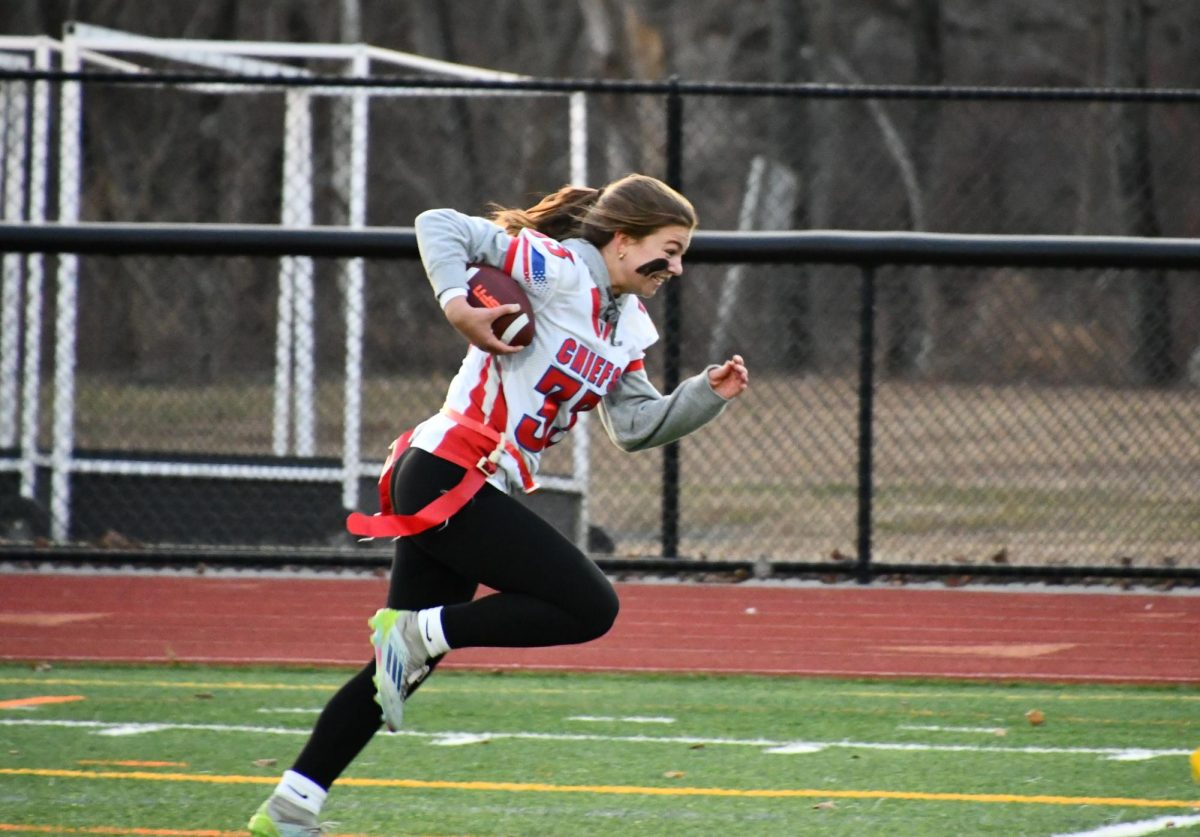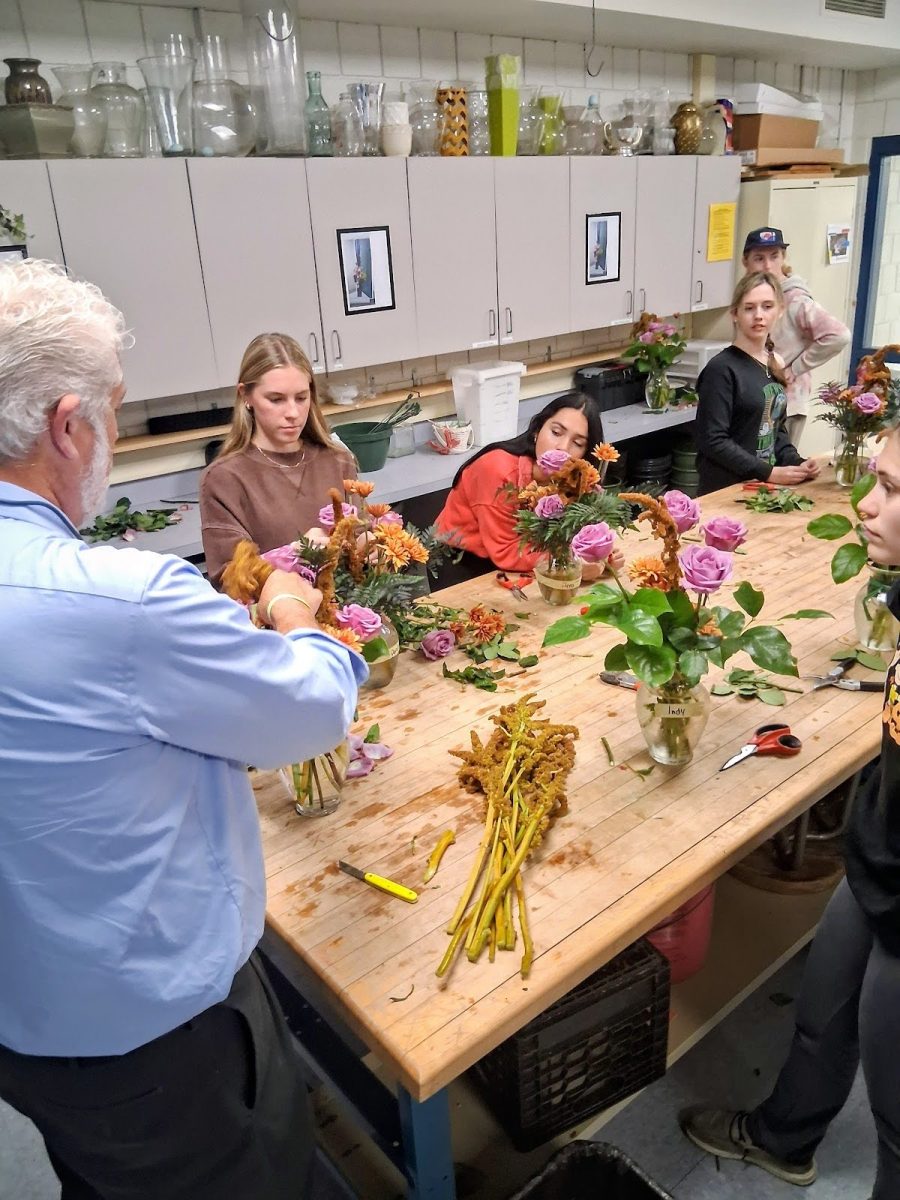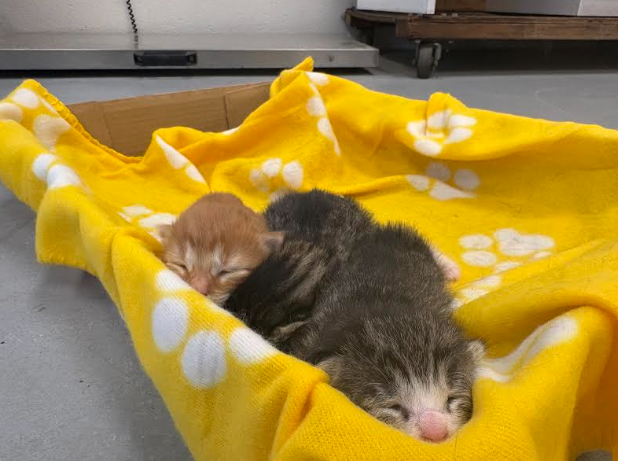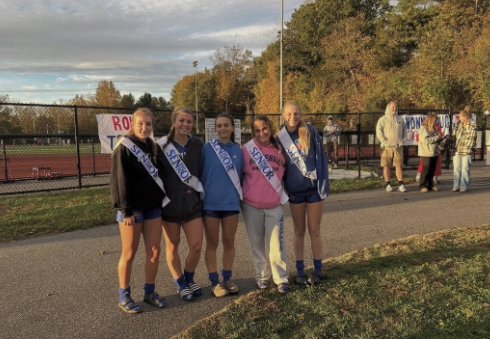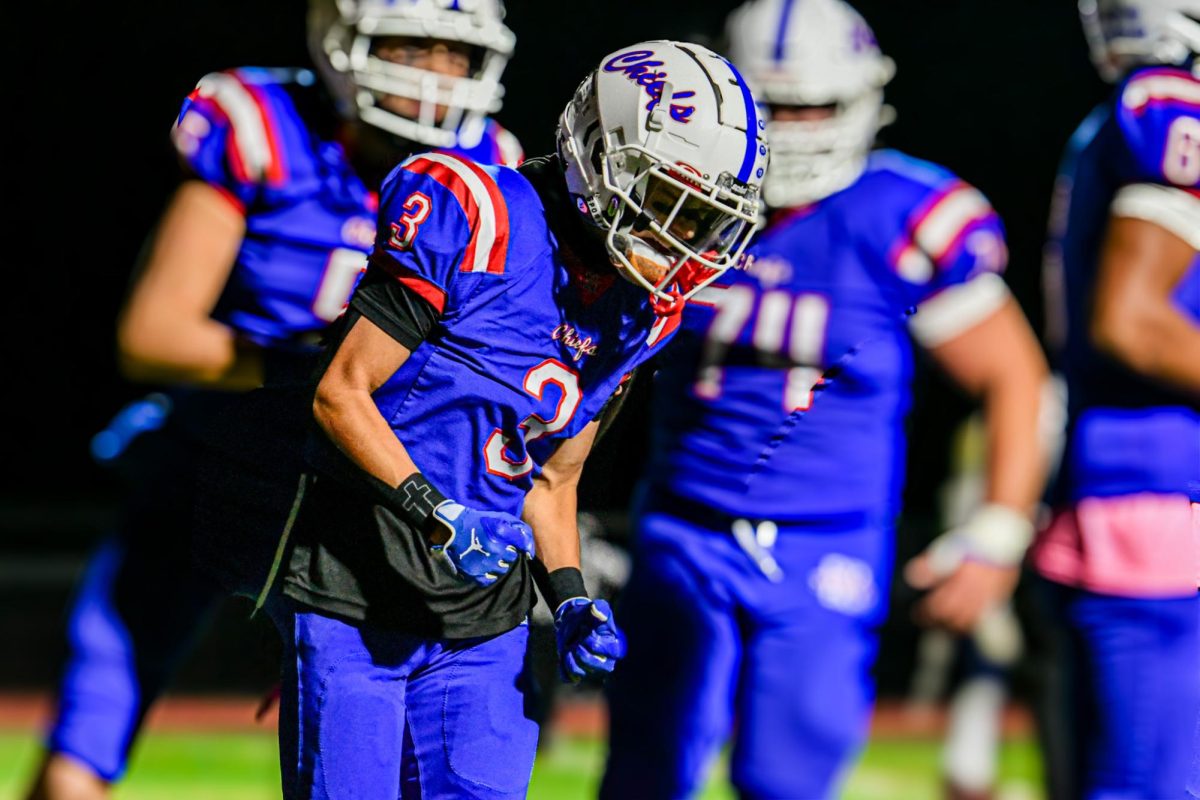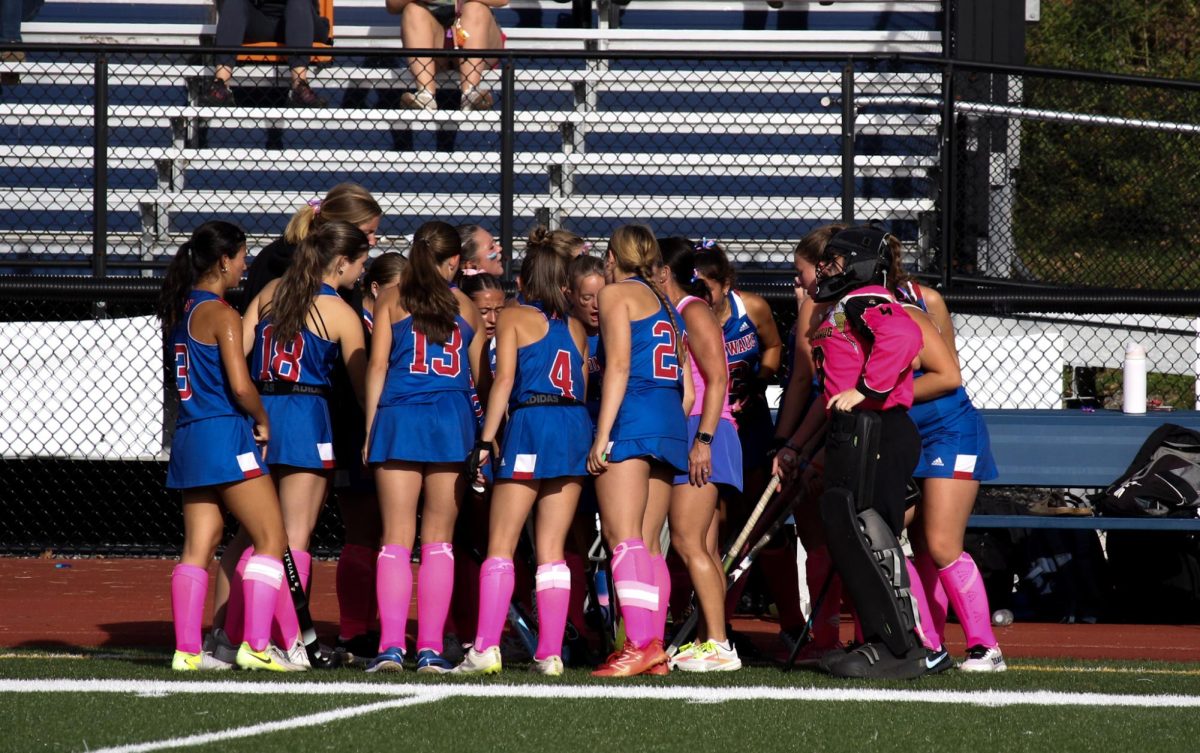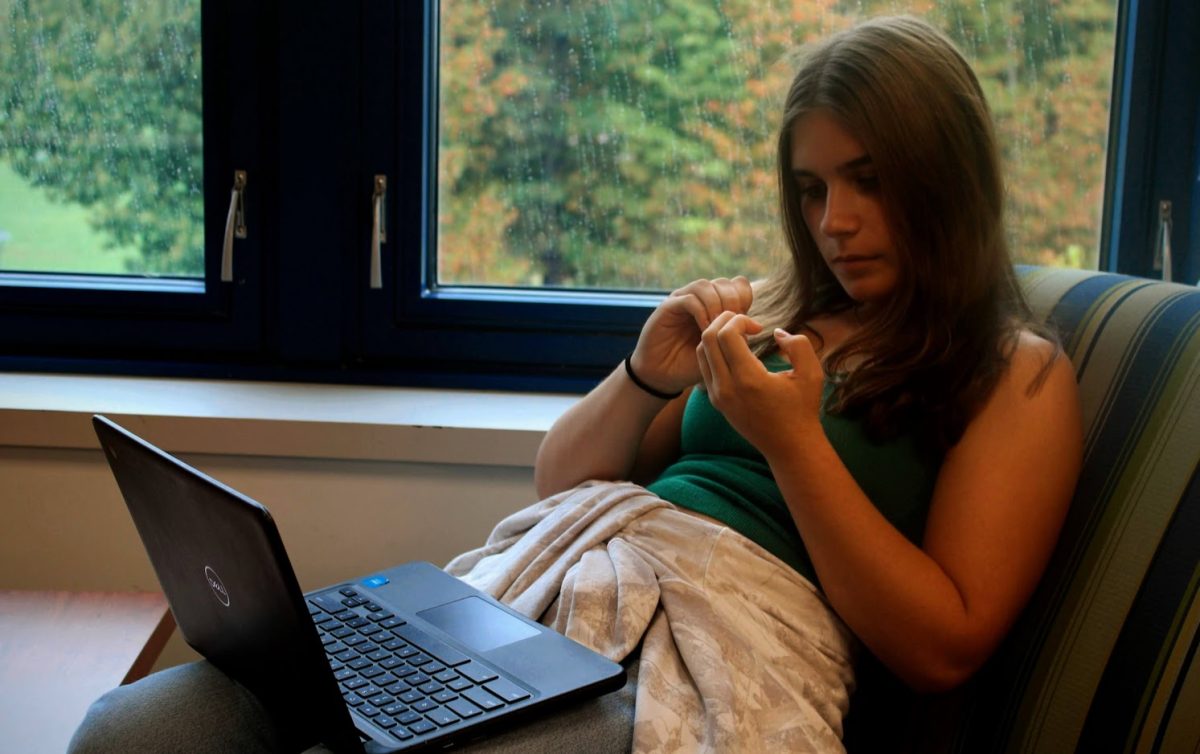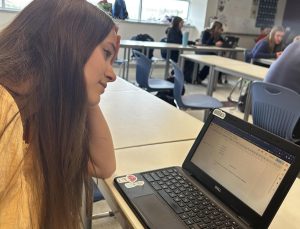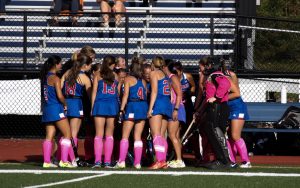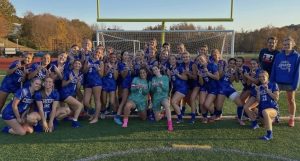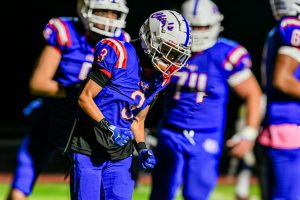Sticky Season for Natural Resources Students
Students in the natural resources class take part in their first week of boiling down sap to make syrup. From left, Jason Suess, Joe Velky, Colin Frechette, Thomas Faull, and Gianna Lodice. (Woodbury FFA)
March 31, 2023
WOODBURY — Deep within New England’s February weather, tensions rise as students gather the proper materials for sweet sappy syrup
With sugar bushes roped together by blue plastic tubes, the maple syrup flows like molasses down from the hillside to its collection tub.
Students work diligently and happily to get the job done, trying to bring the product from tub to table.
To produce a maple syrup product, the basic requirements include syrup from a sugar maple tree, a way to collect it, and a way to evaporate the excess water.
“The process is long and requires a lot of people to work in coordination with each other,” said Danni Syrotiak, a senior in natural resources at Nonnewaug. “In all reality, the entire class needs to work together in order to produce something.”
Maple syrup season is short and is only possible due to the cold nights and lightly warmer mornings of the late winter while the trees are dormant.
During early spring when the temperature during the night rises, the trees start to come out of their winter slumber, and the enzymes in their sap activate.
This generates a cutoff date for the maple syrup season because beyond the turning point, tree sap loses its longevity and quality.
In accordance with a predicted cutoff date, the natural resources students have to rush into action to collect and refine the sap into syrup, making every step along the way crucial to the final product.
Students of Woodbury FFA’s natural resources class take the syrup season seriously, yet at the same time make it important to have fun.
“We spend a lot of time working in the sugar shack,” said Tony Bruno, a junior in the upperclassman natural resources class, “even taking out time from our study halls to keep our syrup process moving.”
“Hard work and dedication are some qualities of our class,” said Joe Velky, a senior in the class, “although even the hardest workers have learning curves.”
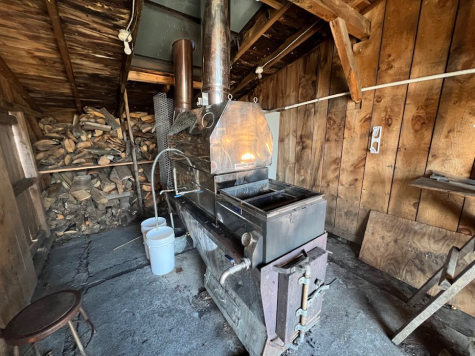
With great movement, natural resources students were on their way to having a productive and efficient season. It is necessary for any learning experience, learning curves are bound to take place.
All of their work was able to hold true — that is until tragedy struck.
On a fateful morning, several natural resources students were left to boil down sap while the rest of the class completed the regular chores.
When left in charge of the evaporator, students have the responsibility of drawing off pure maple syrup when the proper viscosity is reached. Students achieve a quality draw by altering the level of the maple syrup.
During this process, problems can escalate quickly as the possibility of burning the evaporator’s sap pan exists.
To avoid burning the evaporator pan, the system is set up with a valve to adjust the flow of the sap. This control valve is vital to the quality of the maple syrup and has to be constantly adjusted to keep up with the sap being boiled down and the syrup extracted.
Unbeknownst to the students, the water was evaporating out of the sap at an accelerated rate, raising the risk of burning the syrup to the pan.
“When the syrup started to burn we were frantically looking for the valve,” said Bruno. “Before long, the sugar shack was completely engulfed with smoke.”
Within several minutes, the damage had been done.
“The sweet and sappy smell of the syrup shack quickly faded into an odd smoking sensation,” said Michael LaFauci, a senior in natural resources. “As soon as I saw the smoke engulf the shack, I knew it was already too late.”
Once the smoke had cleared, natural resources found the hard corner of this season’s learning curve like a Formula One driver in the Miami Grand Prix.
With hopes of nearly escaping the devastating result, the evaporator pan was the weak link.
“The pan is charred, and spring is coming,” Velky said. “Syrup season is ending and our only solution is to try and find another evaporator pan.”
Stuck at standstill, students learn from their mistakes to move on to the next season.
“We are looking forward to running the evaporator,” said Bruno, “as well as still pushing for a better product from our class.”



